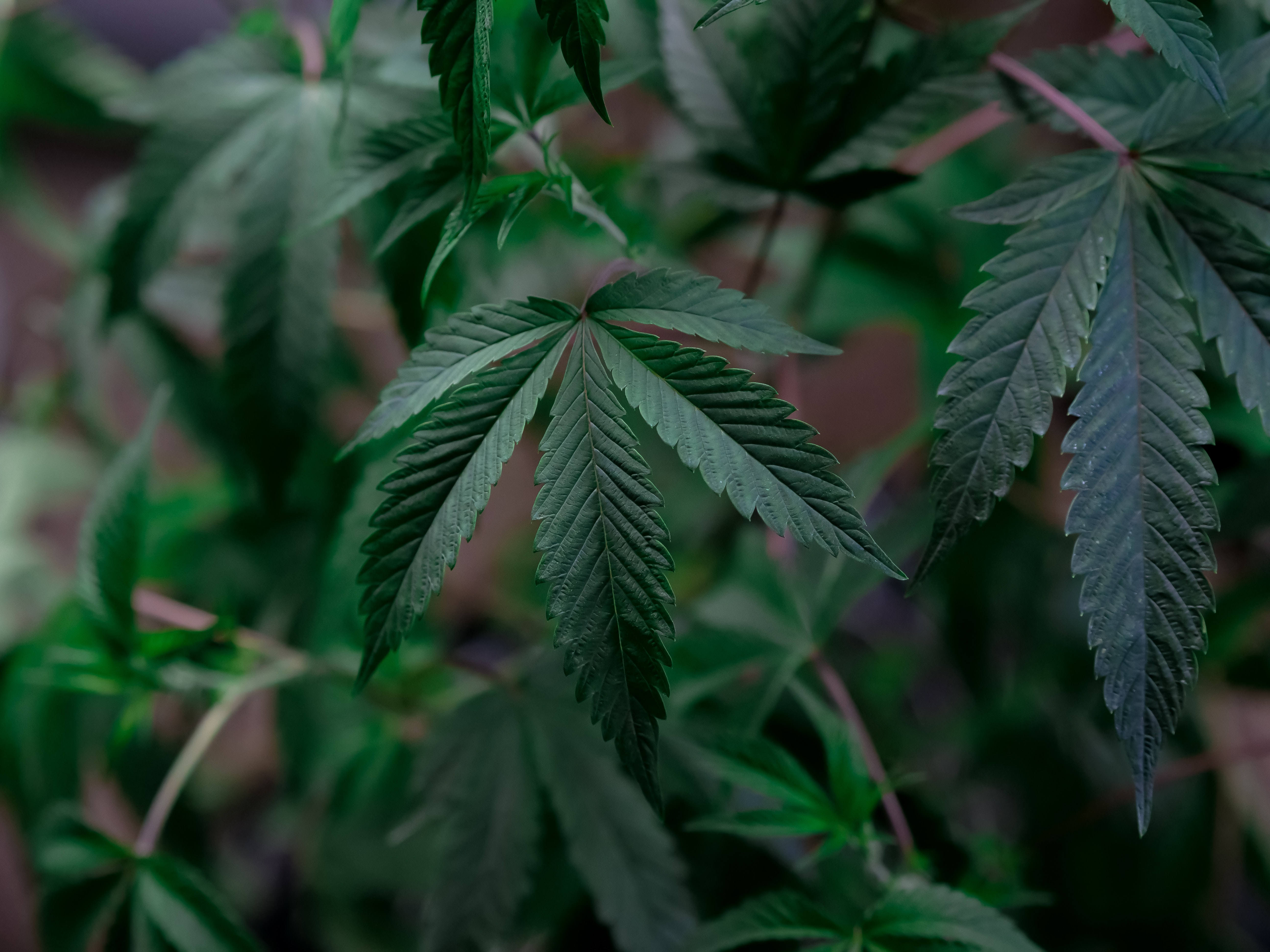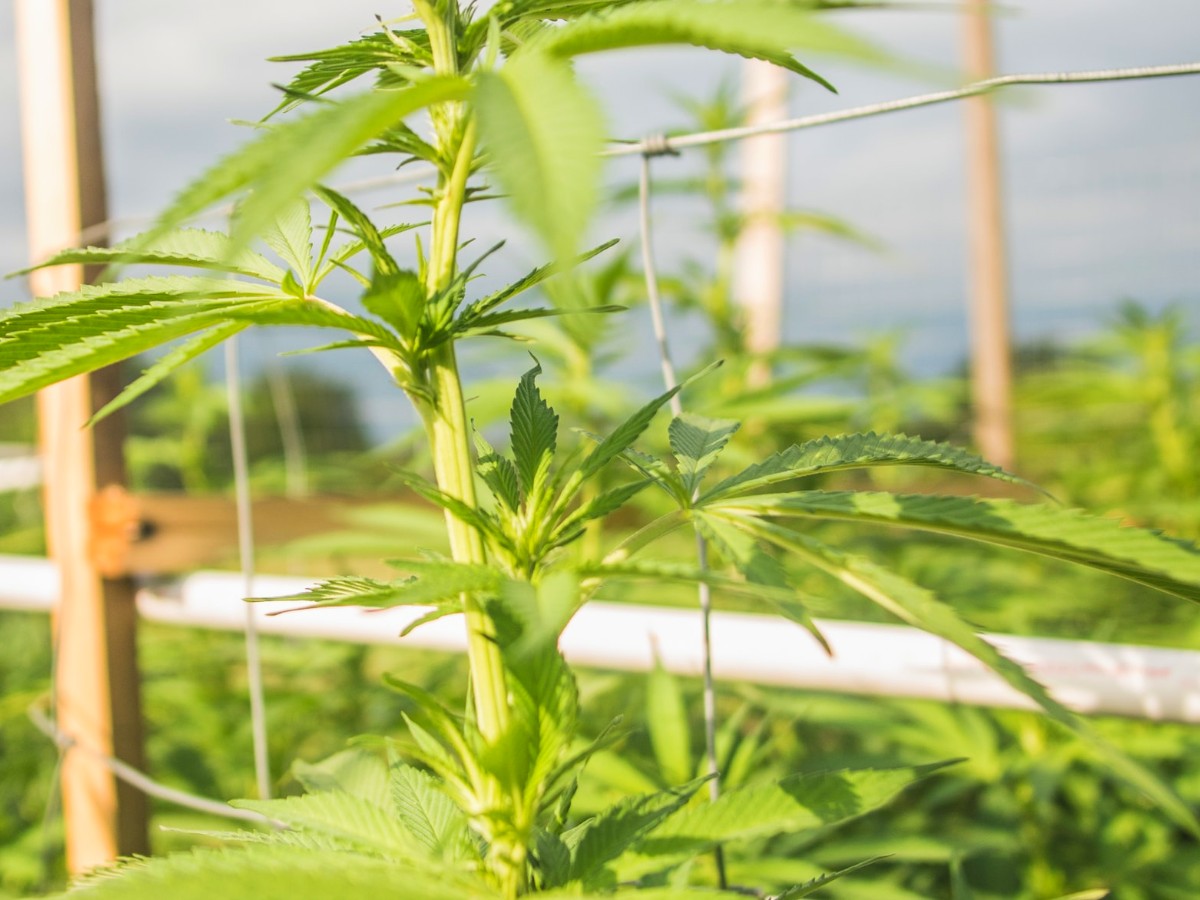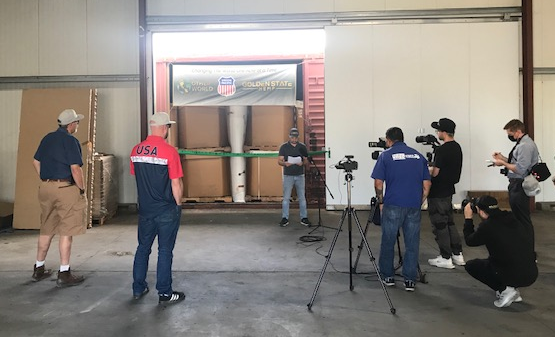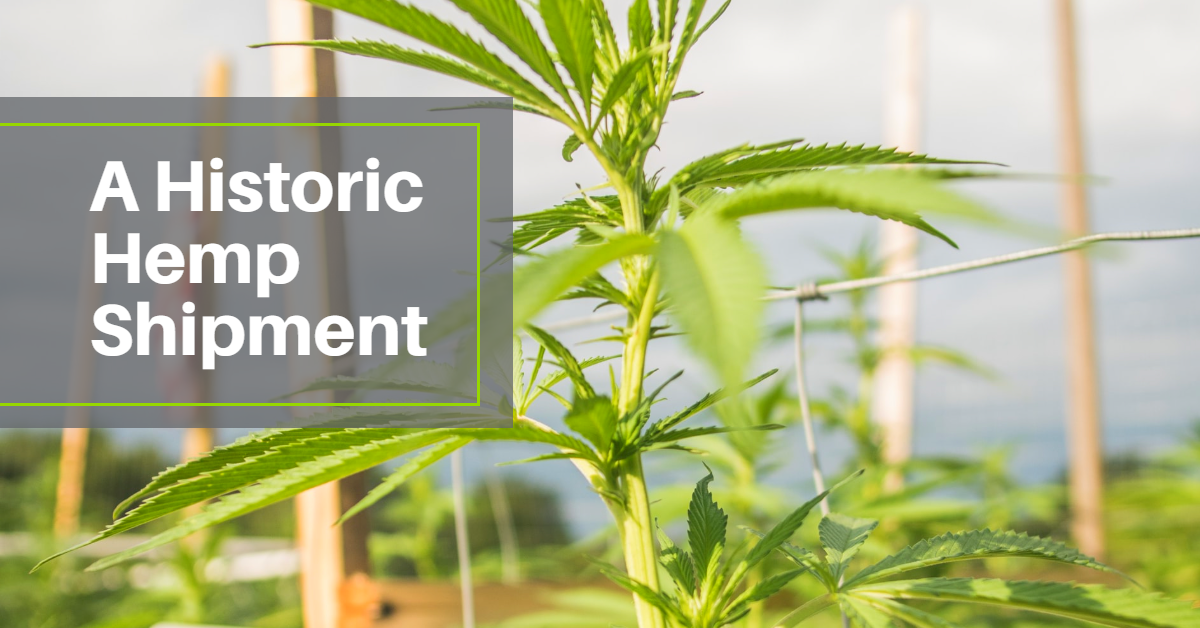On April 20, 2021, Golden State Hemp made history: It was the very first company to ship hemp by rail since the commodity was first prohibited in 1937. In 2018, the federal government lifted restrictions on the cultivation of hemp, marking a very good turn of events for the planet, as hemp is lauded as one of the most renewable resources on Earth. And so while Golden State Hemp’s rail shipment is historical in that it’s a first, it is also a historic step forward for shipping an environmentally advantageous product by the most environmentally responsible way to ship freight by land.
A Quick History of Hemp

The use of hemp dates all the way back to 8,000 BC. Since that time, the plant has been used to produce everything from clothing to paper to building materials for houses. The first recorded reference to hemp in America occurred in 1632, when the Virginia Assembly mandated that farmers must grow a certain amount of hemp to be used locally. Hemp was considered such a useful crop that Massachusetts and Connecticut soon followed with similar mandates.
In later centuries, hemp continued to take its place in U.S. history: George Washington and Thomas Jefferson grew hemp on their plantations, Benjamin Franklin began one of America’s first paper mills using hemp to make paper, and in 1776, the first two drafts of the Declaration of Independence were written on hemp paper. Henry Ford’s first car even had some hemp plastic in it.
While hemp was a valuable commodity for centuries, somewhere along the way the attitude toward it changed. In 1937, growing hemp was prohibited.
Jeff Friedland, CEO of Other World Management, Inc., the holding company for eight companies within the hemp space, including Golden State Hemp, said it’s ironic that hemp was prohibited in the U.S., seeing as how the U.S. Navy relies on rope made of that very plant. “Nothing compares to the durability and strength of hemp, which is why the Navy is the number one buyer of hemp ropes,” he said. “But since the U.S government previously banned hemp and cannabis, the Navy had to buy hemp rope from China.”
The Future of Hemp

On December 20, 2018, the Farm Bill was signed into law, effectively ending the eight-decade prohibition of hemp in the United States. This bill permits broad-based hemp cultivation and allows for the transportation of hemp-derived products across state lines for commercial or other purposes — and without putting restrictions on the sale, transport, or possession of hemp-derived products, as long as they are produced in accordance with the law.
Let’s be clear: Hemp is a much different product than marijuana, although the two are often confused. Both are cannabis plants, but marijuana contains THC, the psychoactive compound that produces a high sensation, while hemp only contains trace amounts. Although medical and even recreational use of marijuana is becoming legal in more states, hemp is now legal across the entire country. Moreover, hemp has an abundance of uses: its fiber can be used for clothing, plants can be turned into biodegradable plastics, and the grain (aka the seeds) provide food for both animals and humans. And of course, as many people are now familiar with, hemp can be used for medicinal purposes, most popularly via CBD oil (although pharmaceutical uses are on the horizon).
Friedland said that what many people don’t know is there are two forms of hemp: medicinal and traditional industrial hemp. Other World Management is working in both of these spaces. Currently, the company specializes in cultivating, processing and creating products from hemp. On the medicinal side of things, Other World Management grows hemp, extracts CBD oil from the plants, and produces consumer products. But CBD is just one of 113 cannabinoids in the hemp plant, so the company is also focused on improving plant genetics, extracting other oils, and testing new formulations in the hopes of using hemp for pharmaceutical purposes. “There is real medicine in this plant, and as time goes on we’re discovering that CBD is good, but some of the other minor cannabinoids have surpassed what CBD can do,” Friedland said.
Other World Management is also transitioning into the fiber side of hemp and has patented technology that can transform hemp starch into biodegradable plastics – essentially producing plastic without using petroleum, and at a lower cost.
Friedland said that while using hemp for medicinal and industrial purposes may seem novel now, eventually it will be so commonly used as an ingredient it will be unremarkable. “As time goes on, hemp will be such a regular part of life that people won’t even be aware of it. Just like you know aspirin can cure a headache but you don’t know all of the ingredients in it, hemp-based medicines will be on the shelves and consumers won’t know it’s even an ingredient,” he said. “The same goes for biodegradable plastics and clothing. Consumers won’t need to know they’re made of hemp. These products might be marketed that way now because it’s cool, but 50 years from now, it will be so common it won’t matter.”
How Does Hemp Benefit the Environment?

In addition to being incredibly versatile, hemp comes with some serious environmental benefits.
Hemp Is a Renewable Resource
Hemp grows very quickly, making it a renewable resource that can yield multiple harvests per year from the same plot of land.
“I can plant an acre of hemp and harvest it in five months, whereas it takes trees 20 years to grow before you can cut them down. That one acre of hemp will then produce five times the amount of paper produced from one acre of trees,” Friedland explained. “When hemp displaces trees, cultivation requires far less water and also reduces deforestation rates.”
Hemp plants are also bioaccumulators, which means they extract toxins from the soil, essentially renewing it. When hemp is planted as a cover crop, it can then be plowed under to fertilize the soil, making it richer for other crops to be planted on the same plot of land.
Hemp Plants Reduce Carbon Dioxide
Hemp is also a biosequestering plant, which means it absorbs atmospheric carbon, helping to reduce carbon dioxide in the air. But hemp isn’t your average biosequestering plant – it actually consumes more carbon than any other plant on the planet, including trees. On average, an acre of hemp absorbs about 11,000 pounds of CO2 during its lifecycle, helping hemp products to be carbon neutral or even carbon negative.
It’s a Sustainable Alternative for Many Products
Hemp is already being used as a sustainable alternative to commonly used products, and that trend continues to grow.
For instance, many car companies are using hemp-based parts and materials made from biodegradable plastic produced from hemp. “The seats in almost every BMW model are made from hemp,” Friedland said. “Imagine a world where we can reduce petroleum use even by 10% with biodegradable plastics made by hemp. That’s a dramatic impact.”
A lesser known but no less impactful hemp product is hemp smokes, hemp cigarettes that contain no tobacco or nicotine and nearly undetectable amounts of THC. Why is this an important swap? Beyond being a healthier alternative to tobacco, hemp filters are far more biodegradable than traditional filters. Cigarette filters are made of petroleum-based plastic fibers and are non-biodegradable, taking up to 10 years to decompose. Hemp filters, on the other hand, disintegrate in water in three minutes and in a landfill in three days. Considering that cigarette butts are the single greatest source of ocean trash, using hemp filters as an alternative can make a big impact on reducing ocean contamination. “I’m not a huge advocate of smoking, but if you’re going to smoke something, hemp is a healthier alternative to tobacco, and hemp filters are much more environmentally responsible than traditional filters,” Friedland said.
Those are just a few examples. Batteries can be made of hemp instead of lithium. Hempcrete can be used for construction and insulation. Roofing materials can be made of hemp. Shoes, clothing, food, biofuel — the list goes on.
Why Ship Hemp by Rail?

Jeff Friedland, CEO of Other World Management, Inc., the holding company for Golden State Hemp, speaks at the launch ceremony for the company's first hemp shipment by rail
Other World Management intends to make the use of hemp more ubiquitous, simultaneously improving the environment and potentially peoples’ quality of life. That means producing – and shipping – more hemp as time goes on. So what made the company try rail? Friedland said he had two goals: lower shipping costs and reduce the company’s carbon footprint. Shipping hemp by train accomplishes both.
In terms of costs, rail typically offers a lower cost per ton mile than truck. On the environmental side, on average trains are up to four times more fuel efficient than trucks, which means moving freight by rail instead of truck reduces greenhouse gas emissions by up to 75%. Beyond Friedland’s current goals, rail helps Other World Management scale for the future growth, as one rail car can carry the same amount of cargo as 3-4 trucks.
“I was looking for a long-term partnership with a company to help reduce my costs on shipping, but I also really wanted to use a shipping mode that would help lower our carbon footprint. Our company is trying to be carbon negative,” Friedland said. “The hemp plant itself is the perfect plant for reducing carbon, since it consumes more than any plant out there. It’s the best plant to help save the environment. If it’s the best plant for the environment, why wouldn’t you use the best shipping mode for the environment? You have to think of everything that goes into our carbon footprint, and shipping with Union Pacific reduces it.”
Other World Management’s first shipment with Union Pacific totaled about 32,000 pounds of hemp and traveled from the 550-acre Golden State Hemp farm in Fresno, California, to the company’s medical R&D lab in Denver, Colorado. From there, oil will be extracted from the plants and will be used for pharmaceutical research and consumer products.
In order to gain access to rail, Loup Logistics helped arrange transloading service at the origin and destination. Because transloaders are able to seamlessly move products between trucks and trains, Golden State Hemp could access rail even without tracks at their facilities.
In addition to being a cost effective and environmentally responsible shipping mode, moving hemp by train will also help Other World Management overcome some of the disadvantages of shipping by truck.
When the company began shipping hemp two years ago, it was federally legal to transport it in any state. But that didn’t keep shipments from being seized. After all, hemp smells the same as cannabis, even though it has different levels of THC, so oftentimes in states that weren’t participating in the cultivation or sale of hemp didn’t understand the difference and applied a “confiscate first, figure out if it’s legal later” rule of thumb. “Testing and getting the truck back can take up to two years,” Friedland said. “Plus, the product can be damaged.” Because trains travel seamlessly over state lines and are protected by their own police forces, confiscation isn’t an issue.
As hemp shipments increase, Friedland said trucks also pose logistical hurdles. “If you need to move 100 million pounds and the max load on a truck is 50,000 pounds, that’s not feasible. We won’t have the time to move it with trucks; we’d need 1,000 trucks to be working full time, whereas I can load up a train in massive amounts and move it. There’s no comparison,” he said. “Cost, carbon reduction, avoiding law enforcement and simplified logistics — they’re all advantages of shipping by train.”
As Other World Management converts more shipments from trucks to trains, it can make a big dent in greenhouse gas emissions. According to Union Pacific Railroad’s Carbon Emission Estimator, if Other World Management shipped 1,000 truckloads of hemp from Fresno to Denver by train instead of truck, it would reduce that company’s carbon footprint by 54,840 metric tons.
This reduction in the carbon footprint would be equivalent to:
- The carbon removed by 11,681 acres of U.S. forests
- The carbon removed by 1,403,904 tree seedlings grown for 10 years
- Greenhouse gas emissions avoided by recycling 19,084 tons of waste instead of sending it to the landfill.
“We’re the first company to ship hemp since the prohibition of hemp 84 years ago. That’s pretty cool. It’s a first. We made history, literally,” Friedland said. “It should be a celebrated moment. And it’s a great feeling to be involved with Union Pacific as the first company to ship hemp on a train.”
Learn More
Are you looking to reduce transportation costs, lower your carbon footprint, or simplify your supply chain? Get in touch and we’ll be happy to connect you with an expert who can tell you more about shipping by rail. Or, use our carbon emission estimator to find out how much your company can reduce greenhouse gas emissions by shipping by train.
Related Articles
- Rail: An Environmentally Responsible Way to Ship
- Transportation Modes Revealed: A Comprehensive Look
- Rail 101 FAQs
- Transloading Decoded
- From Steam to Green: The Evolution of the Locomotive
- The Rail Industry Is Saving Millions of Gallons of Fuel a Year – And They’re Using “Cruise Control” to Do It
- U.S. Freight Rail: The Envy of the World
- Quiz: Is Rail the Right Fit for Your Shipments?









